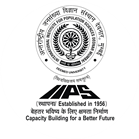- About IIPS
- Academics
- Study @ IIPS
- Departments
- Centres
- Controller of Examination
- Programme
- Distance and Online Education
- Training
- Facilities/Services
- Resources
- Virtual Learning
- Digital Initiatives (MHRD)
- Notice
- Seminars / Workshops / Conferences
- Conferences
- Publications
- Seminars
- Sponsored Research
- Workshops
- Collaboration
- National
- International
- NEP 2020
- Admission
- Courses
- Admission Bulletin
- TIME-TABLE For Admission 2025-26
- Model Question Papers
- Programme Coordinators
- Fellowships
- Academic Calendar
- International Students
- Visa Information
- Administration
- Faculty & Staff
- Research & Publications
- Library
- Information
- Right to Information
- Vigilance Officer
- Annual Report
- Director's Report
- Cells & Commitees
- Cells
- Commitees
- Committees of NEP 2020
- Staff Walfare Committee
- Cultural Committee
- Internal Committee
- Purchase Commitee
- Students Academic Committee
- Student Research Ethics Committee
- Anti-Ragging Committee
- Institutional Review Board
- Social Media Committee
- Prevention of Caste-based Discrimination Committee
- Code of Conduct and Professional Ethics
- National and International honours, Awards, Recognition, and Medals
- Online Facilities
- Employee's Corner
- Memorial Lectures
- Convocation
- IIPS Newsletters
- COVID 19 Information
- Life @ IIPS
Female Headship and Women Empowerment in India Evidence from National Family Health Survey 4
- Home
- Female Headship and Women Empowerment in India Evidence from National Family Health Survey 4
Abstract Content (not more than 300 word, should include: Introduction, Objective, Methodology, critical findings & Conclusion):
Objective: To understand the current situation of female headed households in India through which the socio-economic status of female headed households and women’s status under male and female headship are examined. Methodology: To understand the multi-dimensionality of poverty and other socio economic indicators of female headed households, better mechanisms are applied. It include measuring the level of education of the female head, girl child's education, age at marriage, ownership of land and other assets, household wealth index, conditions such as house type, source of drinking water, type of toilet facility, supply of electricity, woman autonomy etc. in both male headed and female headed households. The data source is National Family Health Survey (NFHS). Findings and conclusion: The increased number of families headed by women in India is explained by rapid socioeconomic changes that disrupt family relationships by enhancing family breakdown such as divorce, separation, widowhood and so on. It is found that female household headship can be positive and empowering for women. The indicators of ‘participation in decision making’, ‘access to bank account’ and ‘asset ownership’ of women under female headship are found better than those women under male headship.
Do you require financial support to attend the seminar ? (Not applicable for virtual meet):
Yes-full
Gender:
Male
Evaluation Status:
No
